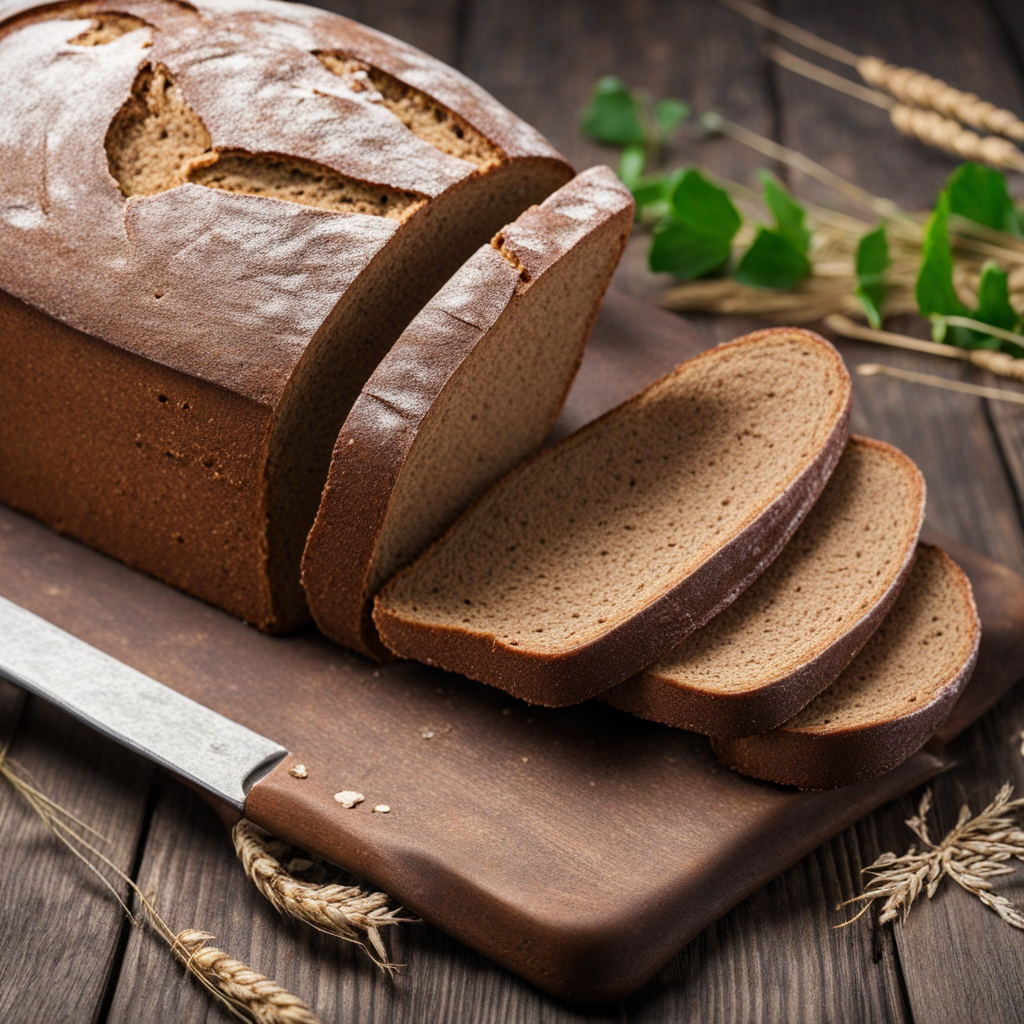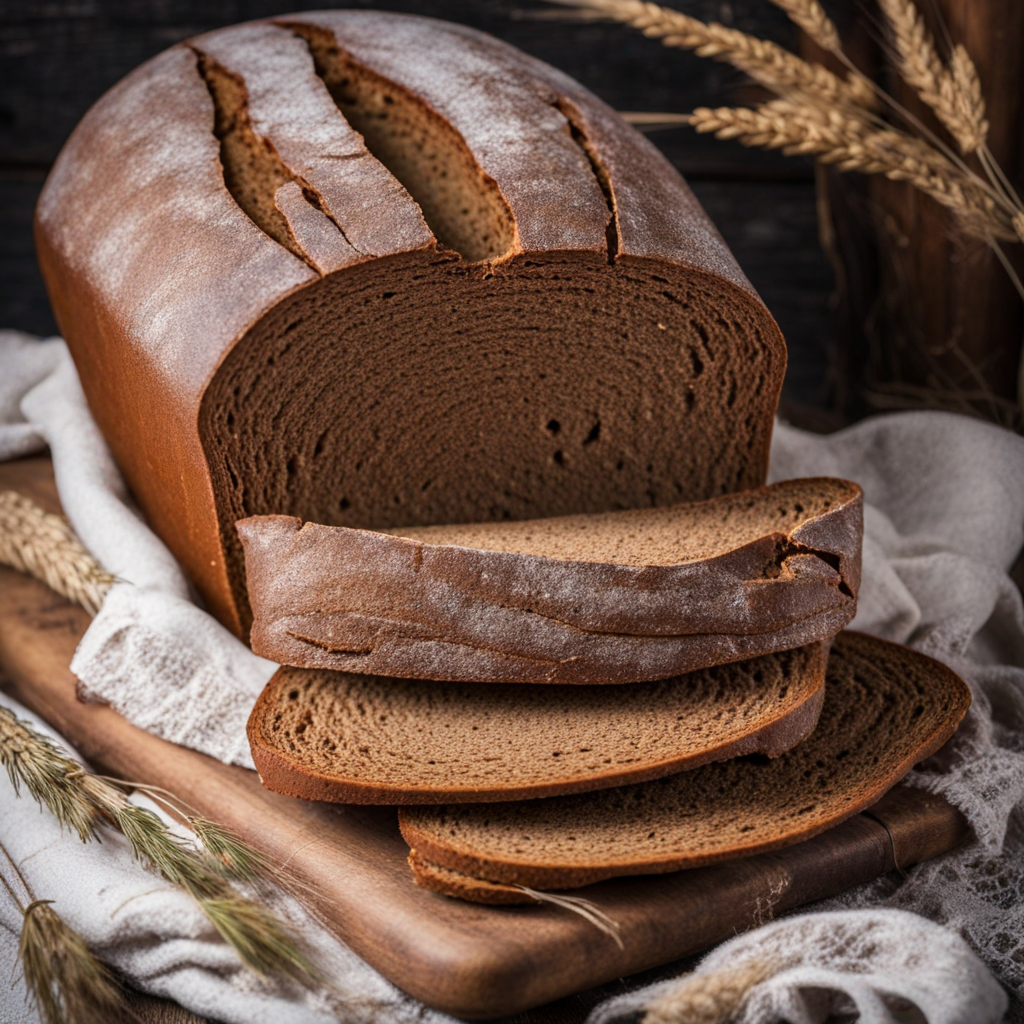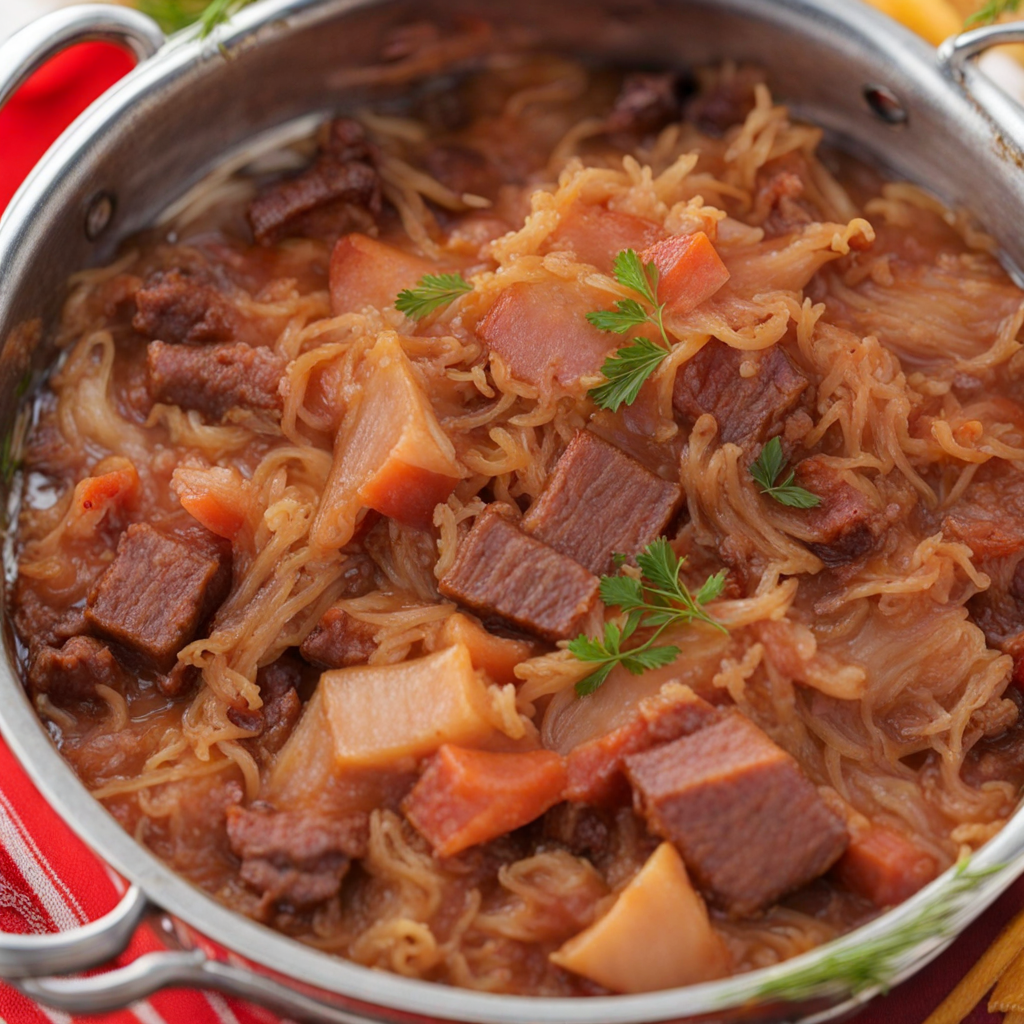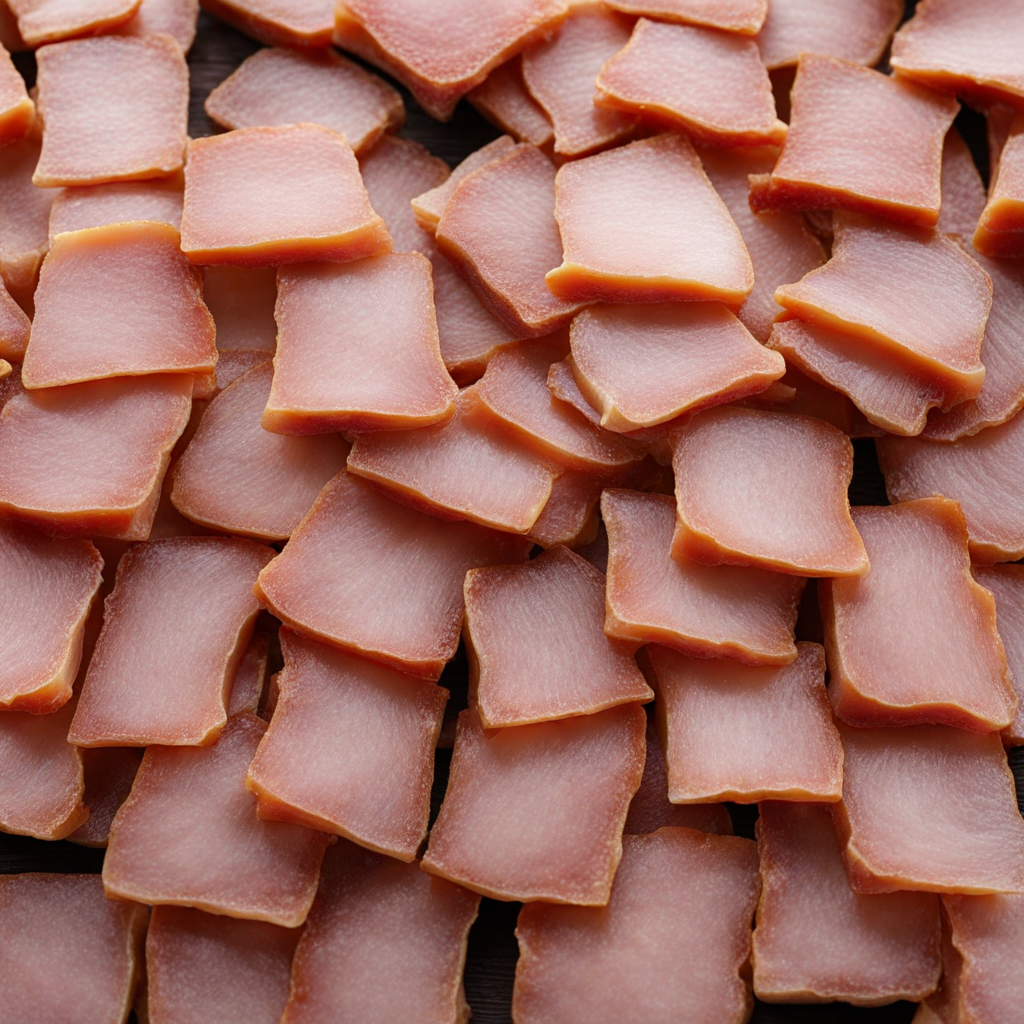Belarusian Rye Bread
Belarusian Rye Bread, known locally as "zhur," is a staple of Belarusian cuisine that embodies the essence of the country's agrarian roots. Made primarily from rye flour, this bread has a dense and hearty texture, with a rich, earthy flavor that sets it apart from its wheat-based counterparts. The fermentation process, often using a sourdough starter, lends the bread a unique tanginess that complements its robust character. Traditionally baked in wood-fired ovens, Belarusian Rye Bread often has a beautifully crusty exterior, while the interior remains moist and chewy, making it perfect for slathering with butter or enjoying alongside a hearty soup or stew. The nutritional profile of Belarusian Rye Bread is impressive, as rye is high in fiber, vitamins, and minerals, contributing to a feeling of fullness and aiding digestion. Its dark color is indicative of the whole grain used in the production, which enhances its flavor and nutritional benefits. Often, this bread is enriched with additional ingredients such as seeds or grains, which add delightful crunch and complexity to each bite. The combination of the slightly sour taste and the multitude of textures makes it a versatile accompaniment to various dishes, from savory to sweet. In Belarus, Rye Bread is more than just a food item; it symbolizes tradition and hospitality. It is commonly served at family gatherings and special occasions, often accompanied by pickles, cured meats, or cheeses. Its ability to pair well with both simple and elaborate dishes makes it a cherished staple in Belarusian households. For anyone looking to explore new culinary landscapes, Belarusian Rye Bread offers a unique taste experience that is both comforting and deeply rooted in the rich history of Belarusian culture.
How It Became This Dish
The History of Ржаной Хлеб (Rye Bread) in Belarus #### Origins: The Grain of the Land Rye bread, known as "Ржаной хлеб" (Rzhanoy Khleb) in Belarus, holds a deep-rooted place in the culinary history of the region. The origins of rye as a staple grain can be traced back to the Eurasian steppes, where it was cultivated as early as 4000 BCE. However, its prominence in Belarus can be attributed to the region's specific climatic and geographical conditions, which favored the growth of rye over other grains like wheat. Rye's hardiness made it particularly suitable for the colder climates of Eastern Europe, where the growing season was often short. By the Middle Ages, rye became the primary grain for the peasant population in Belarus, both for its nutritional value and its ability to thrive in soil that was less fertile. The cultivation of rye was not merely agricultural; it became a symbol of resilience and sustenance for the Belarusian people. #### Cultural Significance: A Symbol of Identity In Belarusian culture, rye bread is more than just a food item; it embodies a sense of identity and tradition. It has been a central part of the Belarusian diet for centuries, often referred to as "the bread of life." Rye bread is traditionally made from dark rye flour, which gives it a dense texture and a slightly sour taste, a result of the fermentation process often used in its preparation. Rye bread holds a significant place in various cultural and religious ceremonies. For example, during weddings, it is customary for the bride and groom to be greeted with a loaf of rye bread, symbolizing hospitality, health, and prosperity. This practice reflects the belief that sharing bread is a sacred act, binding families and communities together. Additionally, rye bread is often used in ritual offerings to ancestors, reinforcing its role in the spiritual and cultural life of the Belarusian people. #### Development Over Time: From Peasant Food to Culinary Heritage As Belarus underwent various historical transformations—from the Grand Duchy of Lithuania to the Polish-Lithuanian Commonwealth, and later, the Russian Empire—the production and consumption of rye bread evolved. In rural areas, traditional methods of bread-making were passed down through generations, with recipes often varying by family or village. Each loaf of rye bread carried not just the flavors of its ingredients, but the stories of the families who made it. By the 19th century, as industrialization began to take hold, bread-making started to shift toward more commercial methods. Bakeries began to emerge in urban areas, producing rye bread on a larger scale. However, this industrialization did not erase traditional practices; rather, it coexisted with them. Many Belarusians continued to bake rye bread at home, preserving their culinary heritage amidst the changes brought by modernity. The 20th century brought significant upheaval, including two World Wars, the Soviet era, and the struggle for independence. Each of these periods impacted the availability of ingredients and the methods of preparation. During the Soviet period, rye bread became a symbol of sustenance during times of scarcity, often rationed and regarded as a staple of the working class. The state-run bakeries produced standardized loaves that lacked the rich flavors of traditional recipes, yet rye bread remained an essential part of the Belarusian diet. #### The Revival of Tradition: Contemporary Renaissance In recent years, there has been a renaissance of traditional food practices in Belarus, including the resurgence of artisanal rye bread. As interest in local and organic foods has grown, many people have returned to the methods of their ancestors, experimenting with heirloom varieties of rye and traditional fermentation techniques. This revival is also fueled by a growing awareness of the health benefits associated with whole grains and sourdough fermentation, which are believed to enhance the nutritional profile of rye bread. Today, Belarusian rye bread is celebrated not only for its historical and cultural significance but also for its versatility. It can be enjoyed in various forms, from hearty sandwiches to toast topped with local cheeses and meats. Furthermore, it has found its place on the international stage, as culinary enthusiasts and chefs around the world recognize the unique flavors and textures that Belarusian rye bread offers. #### Conclusion: A Culinary Legacy Rye bread in Belarus, or Ржаной хлеб, serves as a testament to the enduring connection between food and culture. Its evolution from a peasant staple to a celebrated culinary artifact reflects the resilience of the Belarusian people, their adaptability in the face of change, and their commitment to preserving their heritage. As Belarus continues to navigate its identity in the modern world, rye bread remains a cherished symbol of tradition, community, and sustenance. It is not just food; it is a narrative woven into the very fabric of Belarusian life, encapsulating centuries of history, culture, and the human spirit. Whether enjoyed at a family gathering or as part of a festive celebration, Ржаной хлеб is a reminder of the past and a bridge to the future, nourishing both body and soul in a land where bread truly is life.
You may like
Discover local flavors from Belarus







